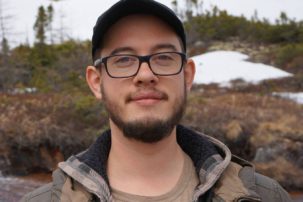A new initiative, HireBIPOC, operated by BIPOC TV & FILM, aims to increase the representation of Black, Indigenous, and people of colour creatives and crew in the Canadian media and entertainment industry.
Jesse Wente, executive director at the Indigenous Screen Office, hopes that HireBIPOC becomes a great initiative for Indigenous communities.
The Indigenous Screen Office anticipates a “likely partnership” with HireBIPOC. They have previously partnered with BIPOC TV & FILM to put together the Solidarity Fund, in the wake of the protests around police violence.
At the same time that Wente hopes HireBIPOC will be helpful for communities serviced by the Indigenous Screen Office, he says there is a “growing concern” about “lumping the Black community and Indigenous community together…with other people of colour in arts funding and supports”—because specific strategies for each community are what’s needed.
He questions if a single umbrella term can encompass the needs of Indigenous, Black, and other communities of colour.
Specificity is important, Wente believes—it’s central in the office’s own work.
The Indigenous Screen Office is an independent organization that was created in 2017 following 20 years of advocacy by Indigenous creators to strengthen Indigenous participation in the Canadian Screen Sector.
“We offer a variety of programs, mentorships, and training in professional development. Our main mission is to increase the representation of Indigenous Peoples within the Canadian screen sector and achieve narrative sovereignty for Indigenous Peoples,” said Wente.
“We are working on a number of new initiatives to support Indigenous training, including a Netflix apprenticeship and cultural mentorship program,” said Kerry Swanson, associate director at the Indigenous Screen Office, in an interview about their latest projects.
Wente believes we must be specific when advocating for different communities and be aware of the realities each community faces.
“Creative decisions must be made by Indigenous Peoples and the project must be owned by Indigenous peoples, in other words the decisions must be made by Indigenous Peoples.”
This includes, Wente argues, decisions around funding, which projects get funded, and how the dollars that come into the system should be allocated.
“We empower our own communities to make those decisions, not have them made for us,” said Wente about the importance of having Indigenous storytellers make their own creative decisions.
Wente continues to explain that Indigenous storytellers have been denied narrative sovereignty.
“In the history of Canada, narrative sovereignty has been rather expressly denied to First Nations, Metis and Inuit people starting with the Indian Act and more specifically, the Potlatch ban that occurred in 1884 and persisted for 70 years in Canada.”
Loss of language and residential schools are among the things that ultimately attacked Indigenous narrative sovereignty.
For decades Indigenous artists were excluded from public arts funding, such as the Canada Council for the Arts, and were largely left out of the creation of the modern Canadian arts and culture industries.
“The Indigenous Screen Office empowers our own communities to make those decisions, not have them made for us,” said Wente.
Still, he believes, solidarity is important and has encouraged creators to apply to the BIPOC TV & FILM Solidarity Fund and future initiatives.

 Jesse Wente, Executive Director of the Indigenous Film Office.
Jesse Wente, Executive Director of the Indigenous Film Office.






